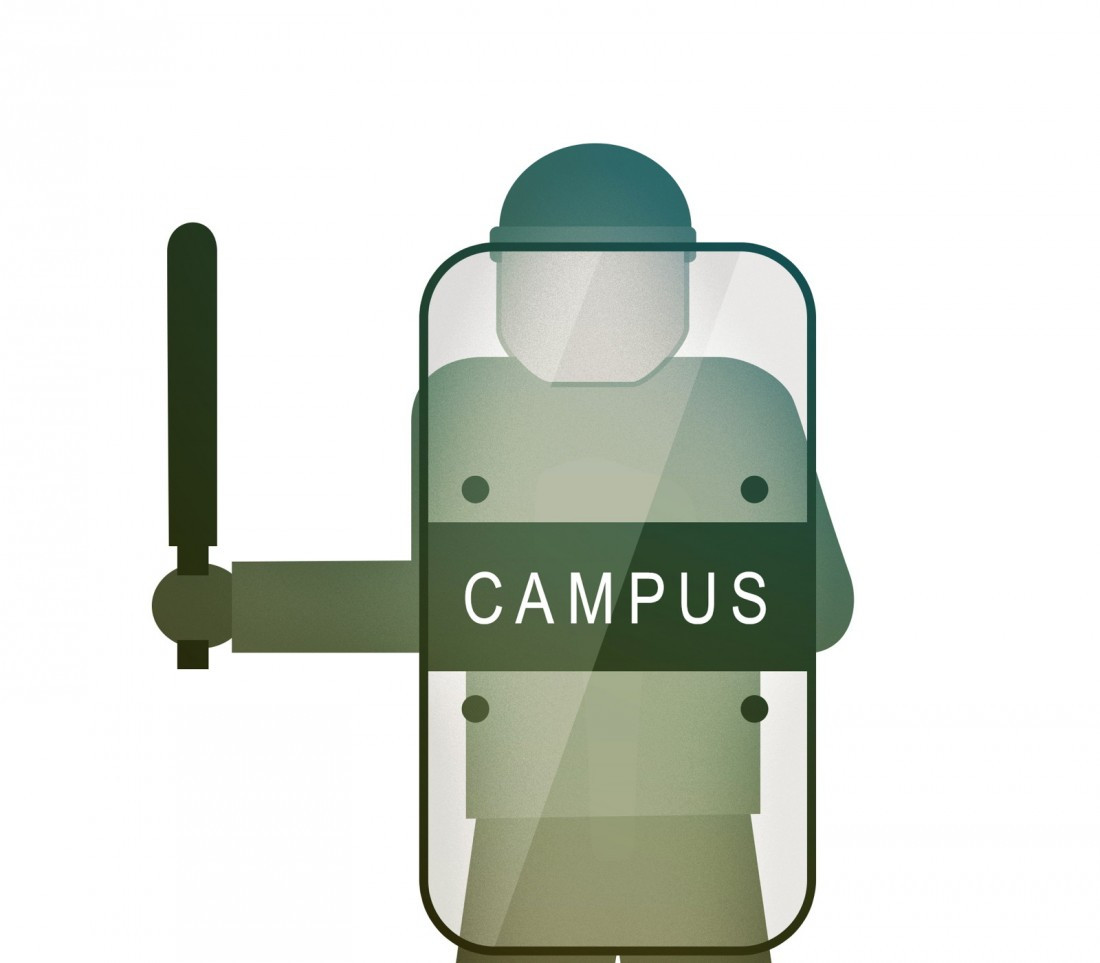Grey Cup parade highlights military presence
Mixing tanks with Santa Claus is the real war on Christmas
The holidays have come and gone. The Starbucks rage is over. The War on Christmas has been won by Walmart and the war on the rest of the Christian calendar has returned. Still, exaggerated stories around an anti-military protest before the break sift around, enflamed by lurid newspaper coverage.
In Early October, a group of students peacefully protested against violent imagery on a navy recruitment booth in Riddell Hall. The UWSA’s Peyton Veitch released a statement responding to the extended military presence on campus during the Grey Cup.
In response, The Manitoban published a commentary piece which reported the protesters using violent tactics – claims which Andrew Vineberg and other students on the scene have dismissed as untrue.
On one hand, we have the exaggerated narrative of violent liberal oppressors surrounding a navy recruitment table on campus.
On the other, we have the less melodramatic story of a peaceful demonstration with no violent interaction between opposing groups of thought. Despite other descriptions, Andrew Vineberg, one of the protesters, tells this reporter that there was “minimal conversation and no raised voices” and it was, all in all, “respectful and peaceful.”
Still, the rumours follow about a fight, although Vineberg assumes that is based on the brief “tussle” with the security guard, and not between the protestors and the navy recruiters.
While the UWSA, according to Vineberg, has “never advocated for a ban on military presence,” it has instead “criticized in an official capacity the response of university security personnel violating university policy, and the specific features of one specific display on a particular day.”
After the incidents at the University, a military-infused Grey Cup parade merged with the Santa Claus parade. Tanks rolled down Portage Avenue with an armed guard minutes before the man in red appeared. Militarism took root, and there was little dissenters could do about it.
Militarization plays out as a celebrated, distantly abstracted violence, instead of a last resort performed by a group of brave men and women. Even if we must concede that weapons are necessary to keep our citizens safe from radicalized boogeymen, we should not normalize the tools of death. If we want to uphold the myth of the peacemaker as a crucial part of the Canadian identity, why then why would we celebrate a children’s folk hero with guns and tanks?
As we adjust to accommodate the growing influx of refugees, we should be disassociating ourselves from structures of violence in order to create not only a physically safe space, but an emotionally safe space as well.
If we include the military in celebratory events, especially for children, we need to recognize the imperial war machine as a definitive part of the Canadian identity and forego the charade of Canada as a peaceful society.
Hannah Foulger is a British Canadian writer and theatre artist.
Published in Volume 70, Number 14 of The Uniter (January 7, 2016)







